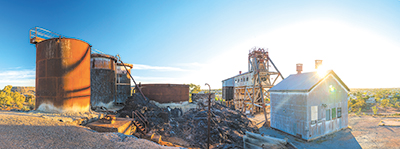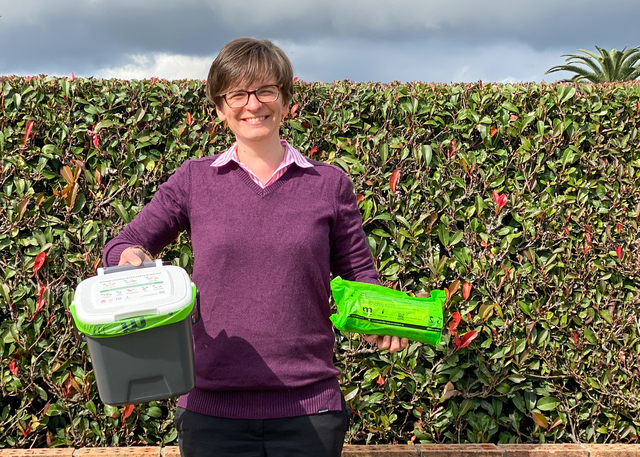Regions around the country are in economic transition and local governments are helping their communities to embrace economic diversity while building on regional strengths.
As Australia’s mining boom trundles into its slower production phase and agriculture and manufacturing continue to experience technological disruption, many of the country’s regions are experiencing consequential economic shifts.
For regions that are dependent on a declining industry, economic diversification is often a necessary step and many local governments are playing a part in this transition.
The remote Far West New South Wales community of Broken Hill has a famed place in Australia’s mining history. The so-called Silver City is the country’s longest-lived mining city thanks to it having one of the largest silver-lead-zinc deposits in the world.
However, for the last few decades, the region’s mining sector has been in gradual decline. From 2010 to 2015 there was a 9.5 per cent decrease in mining jobs in the region.
The good news is, in the same period, tourism and hospitality jobs soared by 53 per cent.
A Council-led urban design and art plan, Living Museum+Perfect Light, hopes to help increase tourism to the area by focusing on culture and heritage, and, in the words of Broken Hill City Council Mayor Darriea Turley, express the city’s “individuality and eccentricities”.
Elements of the plan include: more consistent and ambient lighting for the main street; a focus on public art and events for 25 to 35 year olds; and an ambitious art installation featuring mirrors and a long line of light that will be built across the famed Line of Lode.
The council is hoping to double the value of tourism by 2020 and in doing so inject $39 million into the economy and create over 650 jobs.
“Rather than managing the decline, we are proactive in leading the transformation of this economy to achieve economic growth, create jobs and provide for future generations,” the Mayor said.
It is hoped the project will have larger implications for other Far West NSW towns that visitors may drive through on their way to Broken Hill.
Mayor Turley said “Council is the central sponsor and facilitator” but the city has so far attracted $12 million in funding and is in talks with BHP Billiton about contributing to the project.
It has been a positive month or so for regional funding announcements, with many councils welcoming the Federal budget announcement of $8.4 billion for the Melbourne to Brisbane inland rail project. Another budget announcement was the $472 million Regional Growth Fund for “transformational projects”, which is still slight on detail but will act as an extension of the existing Building Better Regions Fund.
Regional Australia Institute’s Jack Archer said hopefully the program is “flexible enough” that local governments can get funding for projects that encourage ongoing economic growth.
He said governments should “look at infrastructure as a piece of the puzzle” and “think more broadly than just the engineering side and the build, [instead] think about other projects. What can you put alongside [infrastructure] that can help the economic outcome?”
Colin Steele of grants writing organisation Section 51 recommended that, when applying for funding, councils should think about how their projects provide benefits on a state and national level, and also build on the existing strength of the region: “What works from a community development perspective is to maximise the local benefits for the local people from the businesses that you’ve got, and grow those.”
Over the past two decades, Nambucca Shire Council on the north coast of New South Wales has had notable success in growing a manufacturing “cluster”.
In 1998, a meatworks closed down in the area, impacting associated business and causing the loss of several hundred jobs.
The small Shire was staring down the barrel of over 21 per cent unemployment.
After talking to local businesses, the council decided to help grow a small company that was manufacturing coaches. Fast-forward to
today and the area has over five companies involved in vehicle body manufacturing, turning over in excess of $40 million annually, plus 13 related companies that have been attracted to the Shire.
Manager Business Development at Nambucca Shire, Wayne Lowe, said the Shire has provided consistent support to help grow the manufacturing cluster.
This has included working with the local TAFE to provide relevant training, investing in industrial land, teaching companies how to apply for tenders and helping them downscale when the Global Financial Crisis struck.
“Over the past 17 years we’ve just continuously worked away with the companies,” Mr Lowe said. “It’s a real nurturing, sharing industry network that we have here … It punches above its weight for a regional manufacturing arm.”
Companies from Sydney and further afield have now set up shop in the area to take advantage of the network.
Mr Lowe suggested that when going through economic transition, it is vital for local governments to “to understand the manufacturing that is happening in your community and talk to those people” to help “realise the growth in your own backyard”.
In Victoria, Northern Grampians Shire Council recently celebrated the approval of a large-scale hydroponics factory, which promises to create around 300 jobs over four years.
The factory will be built on land owned by a former gold mine that had been a major employer in the town of Stawell, but shut its doors in December last year.
The Shire’s Investment Attraction Officer Lynley Hoiles said when the council knew the mine was set to close, it got on the front foot.
A process of community consultations and a Council-led study helped to establish new economic possibilities for the area.
Ms Hoiles said actively seeking new ideas and “keeping an open mind” is vital for local governments: “Looking outside of people coming to Council and instead going out and seeking them – that’s what we’ve been doing.”
In April, the Productivity Commission released its initial report on ‘Transitioning Regional Economies’ and is currently accepting submissions, with the final report due in December.
The annual State of the Regions report will be released at the Australian Local Government Association (ALGA) National General Assembly in Canberra this month.








